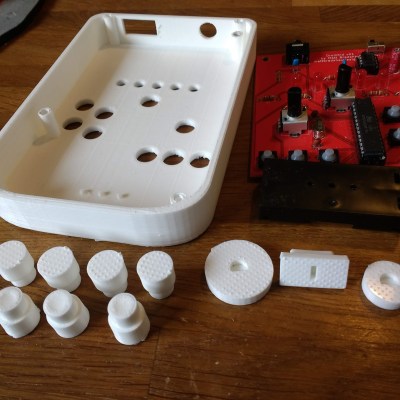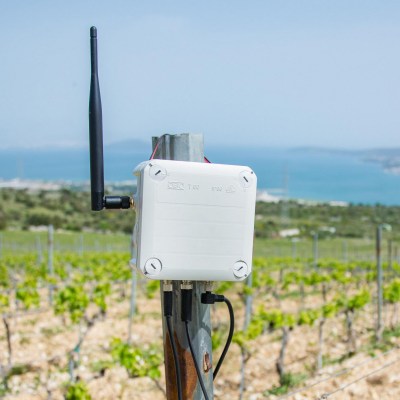For whatever you have built, there is someone who has done it longer, and knows more about it. That is the basic premise of expertise, and for this year’s Hackaday Prize we’re rolling out with a series of mentor sessions. These are master classes that match up experts in product development with the people behind the projects in the Hackaday Prize. We’ve been recording all of these so everyone can benefit from the advice, guidance, and mentorship presented in these fantastic recordings.

Mitch Altman is someone who should be very familiar to all Hackaday readers. He’s the inventor of the TV-B-Gone, that wonderful device that simultaneously turns you into a hero and a villain in any sports bar. He’s the President and CEO of Cornfield Electronics and co-founder of the Noisebridge hackerspace in San Francisco. Mitch is an author and teacher, and seems to be at just about every conference and workshop around the world promoting hackerspaces, Open Source hardware, and mentorship where ever he goes.
The first hardware creator to meet Mitch is Matt Bradshaw, creator of the DrumKid. This is a pocket-sized drum machine that is heavily inspired by Teenage Engineering’s Pocket Operators. Years ago, Matt built a web app that generated drum tracks, and this project is simply taking that idea into the physical realm. For Mitch, this is well-tread territory; years ago, Mitch also built an Arduino-based synth, and for the most part, both Mitch and Matt’s projects are remarkably similar. There were, however, some improvements to be made with Matt’s circuit. The power supply was two AAA batteries and a switching regulator that introduced noise and added cost. Mitch suggested that the ATMega328 could be run directly from three AA batteries reducing the cost and the noise.

The next project up for review is eAgrar, a system for monitoring conditions of plants and the weather in fields. This project comes from Slaven Damjanovic and Marko Čalić. They’ve been developing this device for almost two years building the entire system around the ATMega328. Slaven ran into a problem with this chip in that he didn’t have enough inputs and outputs. The firmware is already written, but thanks to the Arduino IDE, there’s no reason to keep using that ATMega. Mitch suggested using an STM32 or another ARM core. That’s what he’s using for one of his synthesizer projects, and you get more than enough inputs and outputs for the same price as an ATMega.
Finally, we come to Joseph, with his project, the Pilates Reformer. A Pilates Reformer is a bit of exercise equipment that’s only made by three companies and everything costs thousands of dollars. Joseph is bringing that cost down, but there’s a problem: how do you build a hundred or two hundred of these? Mitch suggested simply finding another manufacturer that could build this design, and not necessarily one that builds Pilates machines. This makes sense — if all you’re doing is cutting and connecting structural beams, any manufacturer can do this, that’s what manufacturers do.
This is the third in our series of Hackaday Prize mentor sessions this year, and we have far more we need to edit, and many more we need to record. That doesn’t mean you can’t get help from experts from your prize entry; we’re looking for people who need help with their project and we have a lot of mentors willing to dispense advice. If you’re interested in having someone look over your shoulder, sign up your entry.
[Main image: @matlman23]



















“For whatever you have built, there is someone who has done it longer, and knows more about it.”
Grandparents. :-D
Umm, these contestants don’t need a mentor. I’ll tell them all, for free, that these projects can be done with a 555
Ignoring the 555 joke.. Any mentor, deserving that title doesn’t charge a fee. Not that I’m saying all mentors are 100% altruistic.
It was a very enjoyable opportunity
Having the chance to hear other people’s thought processes was interesting
Cross disciplinary dialogue has its value
Mitch’s feed back even when it was not directed at our Project was still good to hear
For all the sponsors that made this possible, thank you! 😊
>” Mitch suggested using an STM32 or another ARM core.”
That’ll probably run him into a world of trouble. Tried it, found out the delightful intricacies of how IO is handled as a “peripherial device” on the ARM cores and you can no longer rely on your Arduino code returning the actual IO state of your inputs or other devices such as counters. Then it’s a 30 ft jump to the deep end of ARM programming and essentially refactoring your entire code.
The ATmega328 is a very nice device for low level IO. Don’t give it up just because the specs of some ARM part look nice on paper. In reality, it take you 4 times longer to access/sync the IO so your 48 MHz cpu is actually slower than the 16 MHz Arduino. Then you have to rely on the HW counters which are a pain to set up, which don’t play nice with the Arduino libraries, and you’ll have to deal with ASF, and then to figure out how to avoid having anything to do with ASF in order to actually get anything working because it’s just too highly abstracted and massive.
The ARM library hides a lot of the cruft. And there are a number of eval boards that can be used as the production boards, so you don’t need to cut and stuff a board. Not sure where the break-even point is, but a couple of hundred units should be under the threshold.
Plus, by using an eval board, the supplier (usually an ARM vendor like ST) provides a free development tool. This app should be small enough it will be under the code size threshold.
I have the pleasure of knowing Mitch. I am not surprised he is a mentor for this – he has been a mentor for a long time. Kudos.
KiCad is a fantastic tool && only getting better. I am on my #6 or #7 board. There is a learning curve, but there are lots of good videos to get you started. There are several PCB manufacturers you can use. I have used both PCBWay and OSHPark. https://www.seeedstudio.com/ has a good reputation. A good list is at https://www.eevblog.com/wiki/index.php?title=PCB_Manufacturers
create a board (or just the quote) for a 100x100mm for 5 or 10 pieces to get a good baseline.